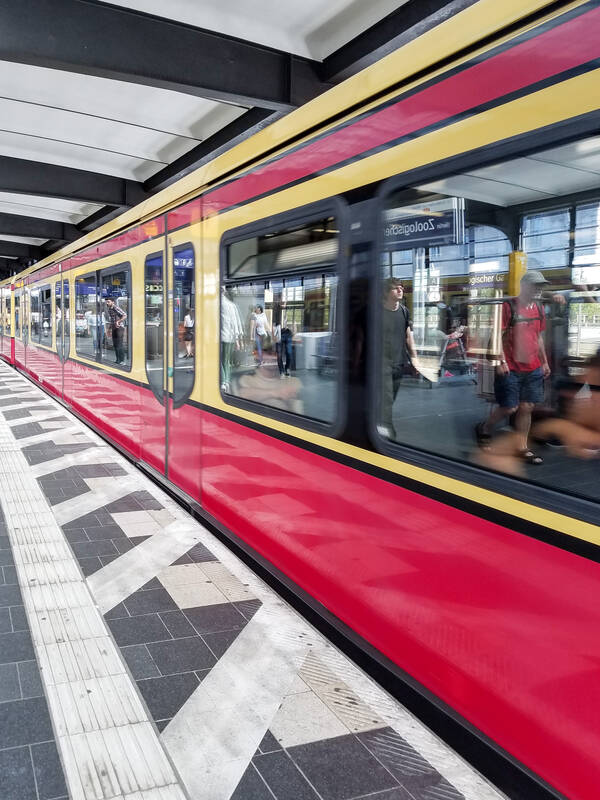
profile / faculty / environmental-design
December 14, 2018
By Solvej Schou
Environmental Design Professor Rob Ball traces his time at ArtCenter
In a Hillside Campus classroom, Environmental Design Professor Rob Ball (BS 1983) uncaps a black marker and sweeps it across a piece of tracing paper on top of a floor plan for a bicycle shop designed by Ekta Pujara, a student in his Fall 2018 graduate Environmental Design course Spatial Scenography Studio 1.
“Where does your eye go with this design?” Ball asks Pujara, who sits next to him, looking intently. Her concept shop is set in bike-centric Highland Park, one of three recently gentrified L.A. neighborhoods for which Ball asked his students to design a space. The goal is to create an inclusive environment that both caters to the desires of the new transplants but that remains welcoming and respectful to the neighborhood’s original residents.
When Pujara suggests adding a section with books about bikes, Rob smiles. “Yes, keep going!” he says. “Remember that your shop is about biking culture.” Her accompanying posters for the project, he says, should tell a story that includes the area’s deep Latino history.
Students in Spatial Scenography 1, he later explains, are taught to think about designing a space in scenes or acts, as in theater or film. “How do we arrive at a space? Then what do we see when we open the door?” says Ball.

Teaching and drawing out creativity in students is wonderful

Ball, winner of 2016’s ArtCenter Alumni Outstanding Service Award, has taught as an Environmental Design faculty member for the past 30 years. At the beginning of the Spring 2019 term, he will shift his teaching position in Pasadena to become the lead faculty and managing director of ArtCenter’s studio in Berlin, where he’s taught several months every year for more than a decade.
“Teaching and drawing out creativity in students is wonderful,” says Ball, sitting in the Faculty Dining Room after class. “In environmental design, we design from the inside out, from the chair to the table to the environment,” he says. “Environmental design also combines different disciplines. I’ve worn many different hats in my own life and career.”
Raised in Northern California by banker parents, Ball grew up drawing in nature. He contemplated medical illustration, and even studied biology at the University of California, Santa Cruz before graduating with an undergraduate degree in fine art and art history. “Much to my father’s uncomfortableness,” he says.
Living in San Francisco in the late ‘70s, he supported himself by printmaking, creating fine art and managing a frame shop. Mulling over the next step in his career, Ball connected with alumna Jackie Jones (BFA 74 Graphic Design), who worked for AIGA medal-winning designer and alum Kit Hinrichs (BFA 63 Advertising). She introduced Ball to the world of design and ArtCenter.

Ball landed a job as a model builder at Bay Area design firm The Burdick Group, headed up by Bruce Burdick (BS 61 Environmental Design). “It felt like home,” says Ball. Ball excelled in his position and the company urged him to take his work to the next level by studying at ArtCenter. Burdick himself wrote a succinct one-line recommendation: “Please admit Rob Ball to the Environmental Design program.”
“Later I discovered Bruce had actually started the department,” says Ball, smiling.
After graduating, Ball was hired by his ArtCenter instructor Michael Jurdan (BS 69 Product Design), who owned an exhibition design firm. In the ’90s, he worked with exhibition designer Herb Rosenthal on a number of projects, including L.A.’s Museum of Tolerance. Exhibition design was a great fit for Ball. “It combines film, graphics, industrial design and architecture with my love of history,” he says.
Amid working—Ball spent three years at Walt Disney Imagineering, before designing retail stores and building up his own consultancy practice—he started teaching at ArtCenter in 1989. “It was a way for me to shift my thinking,” he says. He became a full-time faculty member in 2007, teaching courses ranging from Thesis Studio to Environmental Design 4, in which he emphasizes a holistic design process for interpretive exhibition spaces.
Ball’s thoughtful approach has influenced numerous Environmental Design alumni, including architect and designer David Wick (BS 94) and André Kim (BS 07), director of Starbucks’ global concepts design and innovation. “Rob’s contributions to the development of our departments are almost too numerous to list,” says Environmental Design Chair David Mocarski. “It’s hard to imagine our program without him. But as a fellow creative, I understand the need to try new things.”

Trying new things is what originally brought Ball to Berlin. In 2005, he and former Graphic Design Chair Nik Hafermaas, the current executive director ArtCenter’s Berlin Programs, and Mocarski took 15 students from five different majors to Copenhagen, Denmark. That next year, they went with students to Berlin, Hafermaas’ hometown, and later established a permanent satellite studio in the European city.
“The students go through a huge amount of personal and professional growth,” he says of the College’s Berlin program, which he describes as akin to Mission Impossible. “They have to figure out everything in a city that they don’t know at all,” he says. “I tell them that once they go through the program, that they can tackle any brief.”
The idea of living and working full‐time in Berlin also appeals to Rob’s own penchant for exploring the unknown, just as he did when he first moved to Southern California.
“With design, we say, ‘How do you get comfortable in the uncomfortableness of not knowing?’” he says. “Design isn’t A + B = C. It’s a process, and you need to trust your gut.”




